What happens when you transport 78 MBA students halfway across the world to one of the world’s most vibrant tech hubs and stick them all in one hotel for a month?
A combination of AI insights and data science deep dives by day, and spicy hawker street food and bright city lights by night.
Living and learning together
We’ve just wrapped up the third week of the Future Lab in Singapore, and it’s been (another) highlight of the year so far. Three weeks, three very different focuses, and a look into the future of tech, AI, and sustainability.
There’s something special about all of us living under one roof for a month. In Lausanne, we make our way to school and venture back to our apartments in the evenings, but here it’s all about group exercise and runs in the morning and impromptu dinners and hanging out by the pool or on the roof in the evening. It’s the kind of shared experience that bonds a cohort like nothing else.
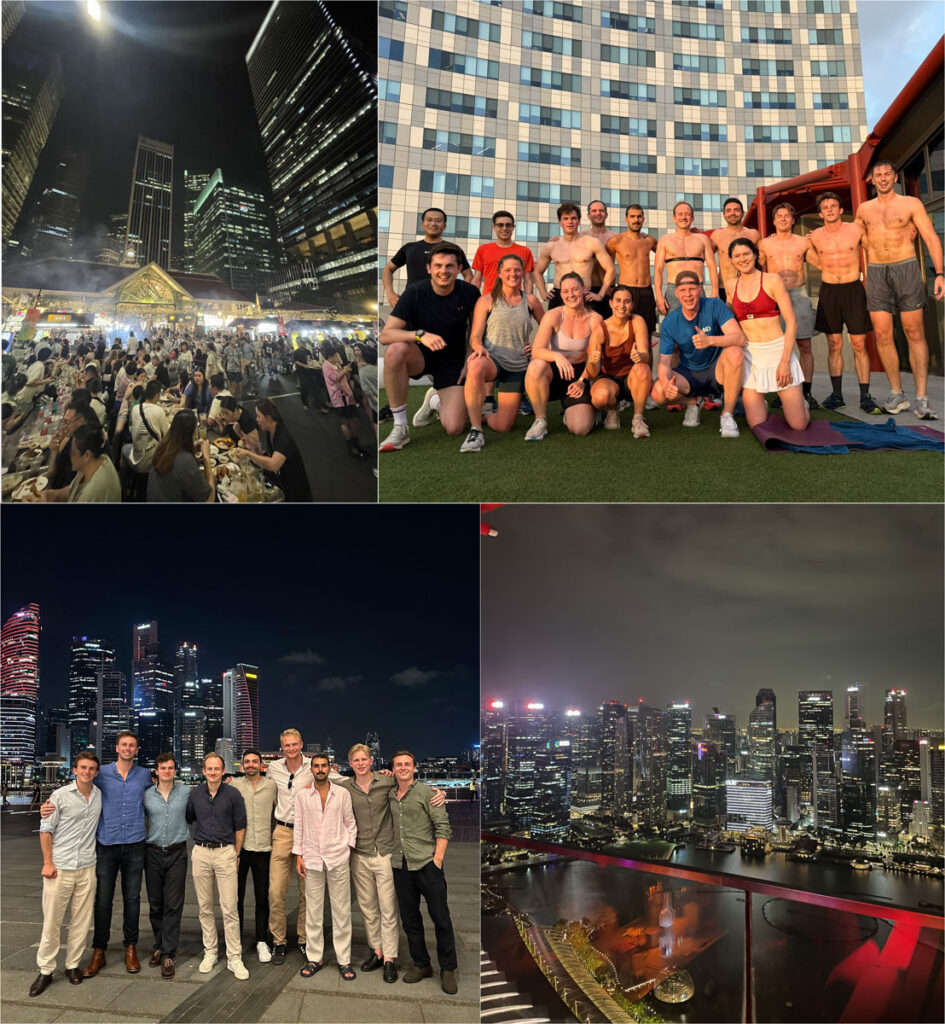
Week 1: Answering an existential question
In Week 1, Professor José Parra Moyano challenged us with a philosophical yet straightforward opening question: “Why Does the World Need You?”
As AI grows more capable, writing our emails, summarizing our reports, and even designing our slides and websites, what can young working professionals still contribute to today’s world?
It turns out, actually quite a lot. As Moyano pointed out, we can ride the wave towards complexity. AI streamlines well-defined tasks, transforming difficult ones into routine tasks, thereby freeing us to focus on more complex problems like setting an overall strategy.
He challenged us to double down on what makes us human – i.e., empathy, storytelling, and clarity of thought. The tools are there to make us faster, but it’s how we use them, what we choose to say, and how we deliver our message that matters more than ever.
One line stayed with me: “AI can draft the slides, but it can’t tell your story.”
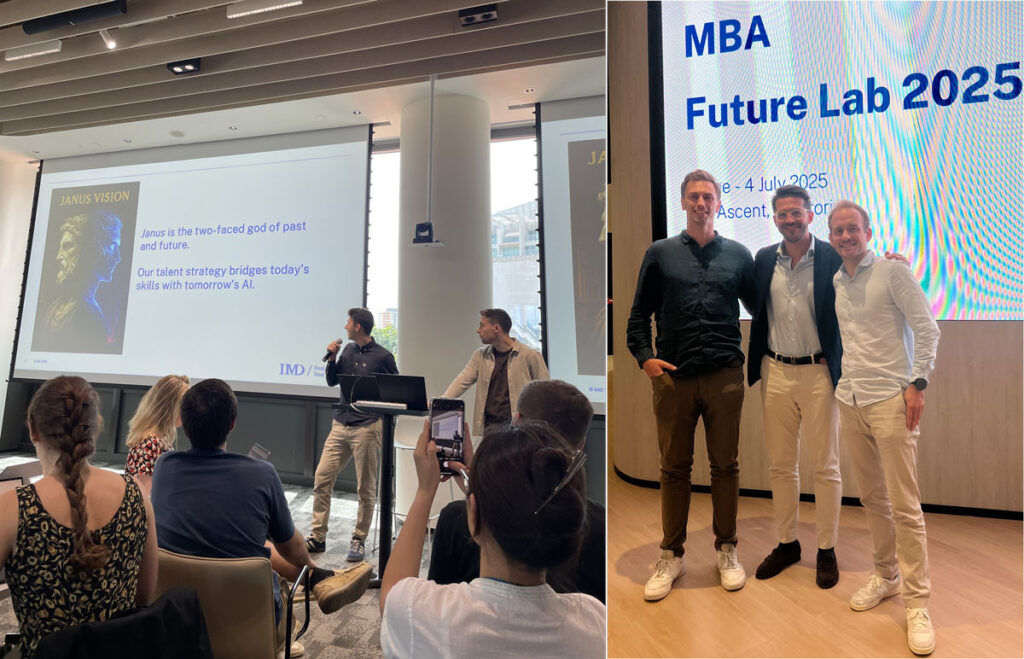
Week 2: Earning our data science stripes
As someone without a coding background, I always envied the data scientists in my previous firm. They could easily whip up some Python code and build complex linear regression models or random forests to analyze data and make forecasts.
Week 2 changed things for me.
As Daniel Keat shared last week, we attended an AI and data analytics bootcamp set up by Professor Amit Joshi where we would clean data, analyze trends, and present our findings. The best part? By the end of the week, even the least code-savvy among us were building models and parsing datasets with the help of tools like Copilot and ChatGPT.
It was an eye-opener. For the first time, I could see myself doing this beyond the classroom and replacing my trusty Excel spreadsheets with more powerful tools like Python in the future.
Week 3: From data centers to subway tracks
Over the last week, it was time for our Discovery Expedition, where we crisscrossed Singapore and visited a host of firms from aviation to chemical plants and banking to real estate.
At SC Ventures, we learned how in-house venturing helps transform a legacy institution like Standard Chartered Bank. We visited A*STAR, the Agency for Science, Technology and Research, to understand how Singapore uses public-private partnerships to promote sustainability. We were also invited to Bunge, one of the world’s largest commodity firms, and tech giant Microsoft, among others.
Of all the companies, three stood out for me:
- 1. Firmus Technologies
Visiting Firmus’s Singapore data center was a glimpse into where the internet (and increasingly AI) happens.
From the outside, it looked like just another building. Inside? More like Fort Knox meets Star Trek. Tight security, sealed rooms, and rows of blinking servers that keep tools like ChatGPT running.
We got to step into one of Firmus’s liquid everywhere HyperCubes, which stores 2,048 Nvidia H100/H200 accelerators. The best part? They’re all stored in liquid to cool them down. This solution uses 45% less electricity than traditional fan-powered systems, crucial when each large language model (LLM) and image recognition model is hungry for power, but also a big cost saving for customers.
It’s one thing to talk about data centers in class, but it’s another to see the infrastructure firsthand.
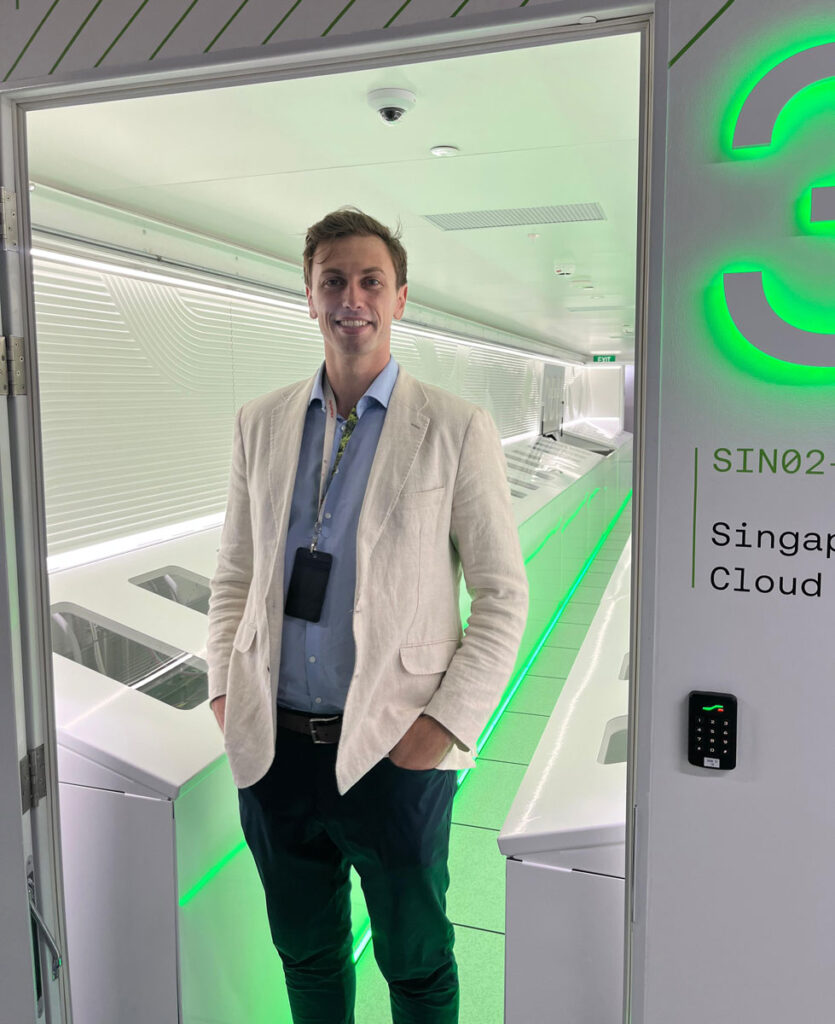
- 2. JLL
I wasn’t expecting much when I heard we would be visiting a real estate company, but when their head of R&D, Ben Hamley, explained their innovations to us, it became clear that they are doing much more than managing properties; what they’re managing is human energy. By combining sensors, AI, and behavioral science, they help companies design workspaces that enhance employee well-being and productivity.
As someone with a background in insurance and employee wellbeing programs, this visit struck a chord. JLL is using its expertise in the property management space to improve employee retention, productivity, and health, one company at a time.
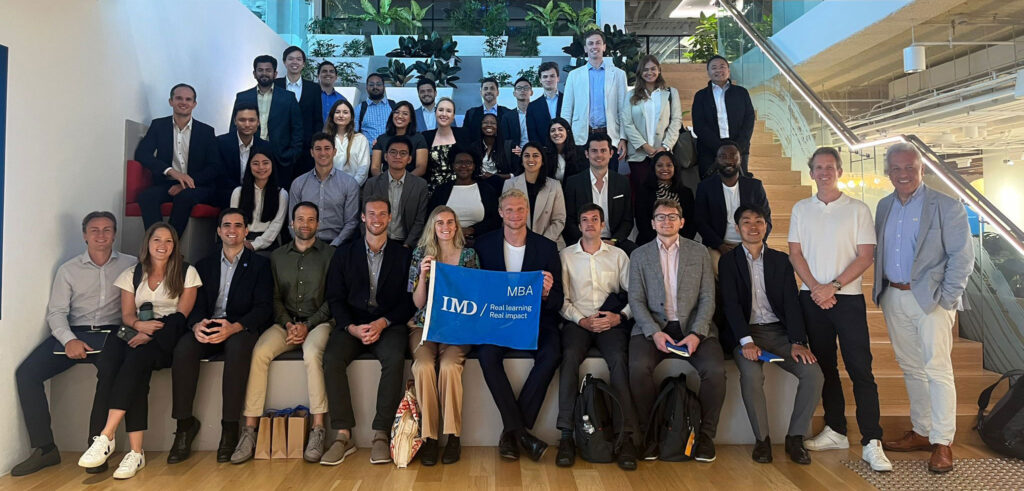
- 3. SMRT
Finally, we saw another example of Singapore’s thriving private-public partnerships. SMRT is the private state-owned transport company that operates Singapore’s public MRT and LRT systems.
We learned about their high-performance Kaizen culture and how they’re incorporating technology to achieve their company ethos of RISE (Respect, Integrity, Safety, and Excellence).
The highlight wasn’t the trains; however, it was the fireside talk with their CEO, Hoon Ping Ngien.
A former army officer, IMD executive program alum, and born leader, he delivered a masterclass in humble, human leadership.
Some of his most memorable insights? You don’t need to be the smartest person in the room. Give people the benefit of the doubt. Never lean on your title; instead, earn your team’s respect through your actions. Keep your message simple and consistent (at SMRT, safety always comes first). Above all, show people that you genuinely care.
What stood out to me was Ngien’s big smile, appetite for life, and brilliant sense of humor. As he said, “People won’t go along with you if they don’t get along with you.”
A powerful reminder that true leadership isn’t granted – it’s built, one conversation at a time.
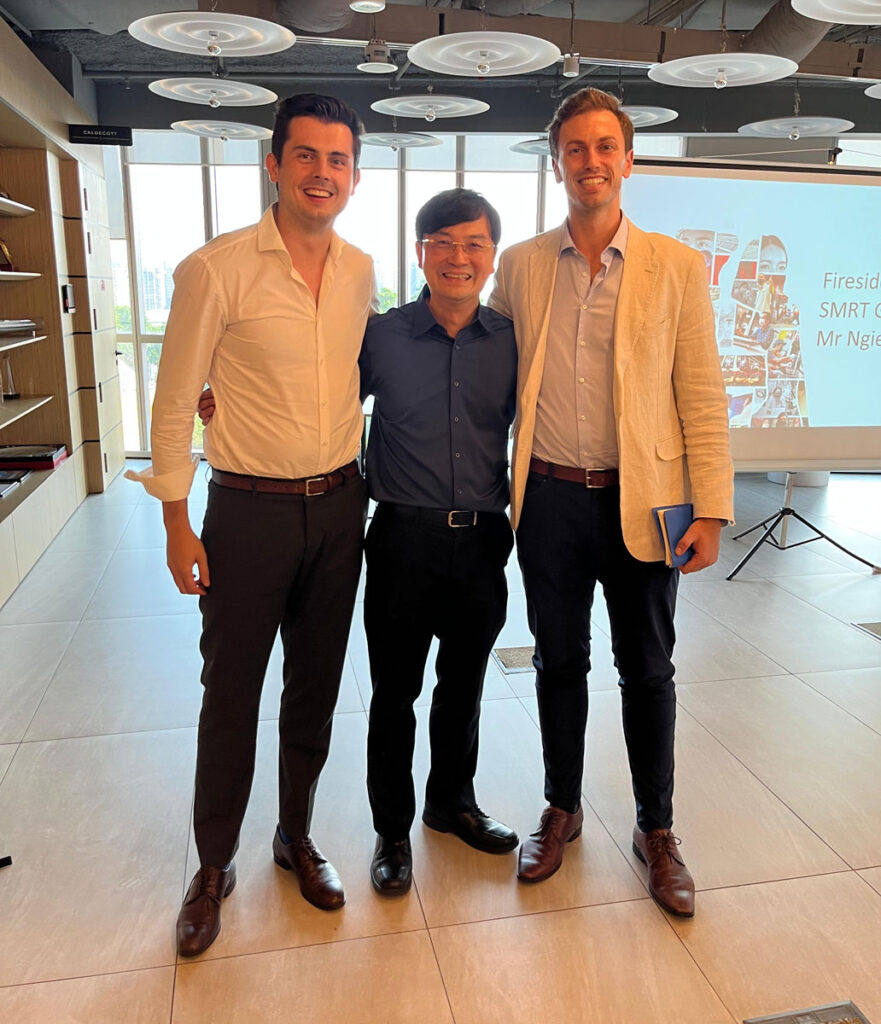
Podcasts, purpose, and passion
Between classes and company visits, my classmate, Konstantin Dreyer, and I have also been actively recording episodes for our podcast, Careers & Character.
Guests have included professors such as José Parra Moyano, as well as classmates from all over the world, including Katinka Wodschow, Auni Mirabrishami, and Abdulaziz Akbar. Each guest shares a unique story, bringing a new perspective on leadership, purpose, and impact. It has been a wonderful way to showcase the talent within our cohort, give our classmates a voice, and build deeper connections with them.
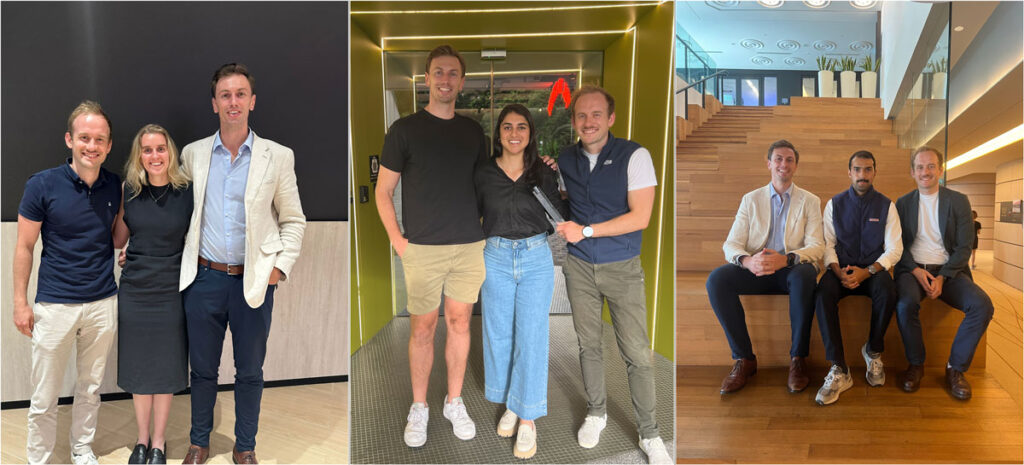
Wrapping things up before we head home
This week, we explore geopolitics with Professors Omar Toulan and Mark Greeven, before returning to Europe on Saturday for the summer break.
It will feel strange not being surrounded by my classmates 24/7, hanging out and learning together. I’ll always remember our time together in Singapore and what we learned, both about the impact of AI and technology on the future of work, but also the timeless leadership lessons we picked up from the business leaders who came to speak to us.
Until next time, sending Future Lab greetings from Singapore.